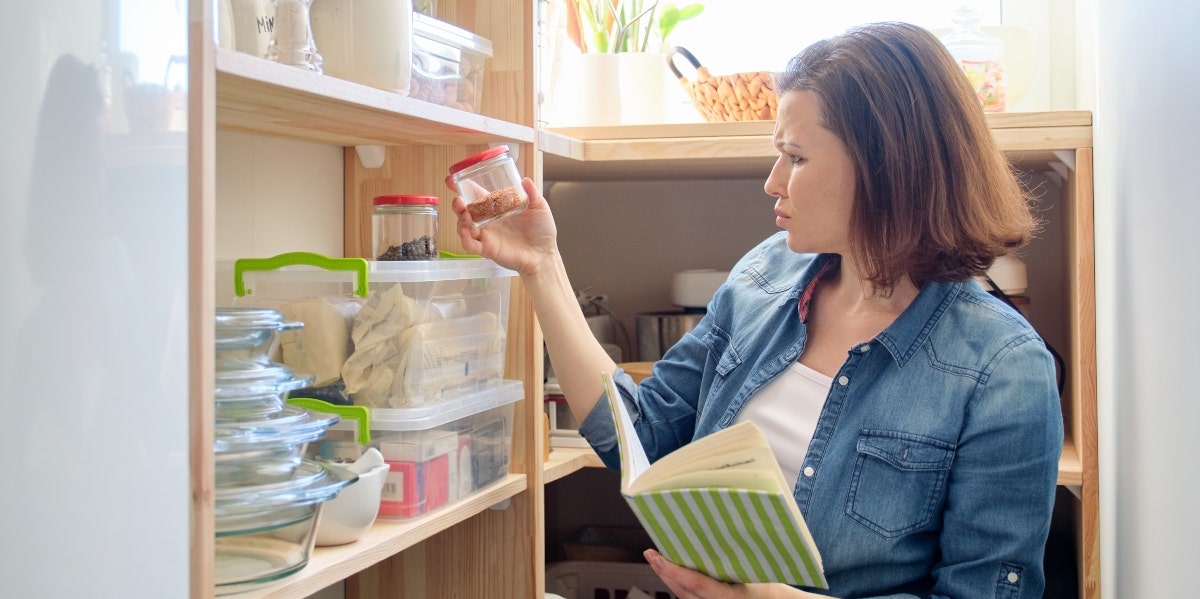3 Steps To Escape The Stress Of Living In "Organized Chaos" With Truly Functional Spaces
Don't just tolerate the spaces in your home, it isn't healthy.
 VH-studio/Shutterstock
VH-studio/Shutterstock The organized spaces of our home have turned into complete chaos. Because our homes have become our everything.
They're no longer simply the place we go to relax at the end of a busy day. Our homes are the place we work, live, play, exercise, eat, and sleep.
Some people have moved from small homes to bigger homes so they can accommodate all that's happening now under one roof.
Other people are rethinking how they use their existing space.
No matter which camp you fall into, the best way to go about this process is to know what you want to happen in each of the organized spaces and then equip those spaces with the things to support the activities.
Here are 3 steps to creating truly defined and functional organized spaces in your home.
1. Be a tour guide.
Since there are clearly a lot of activities, our homes must now accommodate. And the best way to start is to take a tour of your home. Do this as if you're a tour guide at a museum.
As you pass by each room or area, say out loud everything that happens in that space. Take a minute and elaborate on that as you continue on your imaginary tour.
You may say something like: "This is the dining table. The children in the family do their homework here. On game night, the family gathers and plays board games. This table is also used nightly for dining and sometimes as a place to organize pantry supplies."
Wow! Many, many things happen at the dining table — not just eating. With this information, you can then organize the space around the dining table. Think about where homework supplies are stored, for instance.
Is there a place near the dining table for one or two caddies filled with colored pencils, markers, pencils, erasers, a ruler, glue, and other homework supplies?
Where are the board games kept? Do you want to keep puzzles with the board games? Is the shelf at the top of the coat closet a good place for the puzzles and board games because it's also convenient to the dining table?
Repeat this exercise for every room and area in the house until you have defined organized spaces. Playing this little game with yourself will help you.
2. Ask yourself how you use the space.
Think about how you use or want to use each separate space. Don't fall into the trap of thinking in line with how you're supposed to use it.
That has no bearing on your intention to create organized spaces that are truly functional for you and your family.
Call into your mind a picture of how each area will look and feel once it's organized. Bring into the space all the things which will support the activities you want to be able to do.
Some rooms may share multiple functions. For instance, your current guest room — because it's seldom used for guests — may switch its primary function between guest room and office.
This will involve moving some furniture around and perhaps even acquiring some new furniture.
Think about the furnishings that supported you in your office at work. Where will you keep your files, for example?
If most of them are digital, you probably won't need much more than a two-drawer filing cabinet. Then you can use one drawer exclusively for business and the other for household files.
3. Ask yourself important organizing questions.
What do you want the people with whom you are meeting to see behind you?
Do you have awards, certificates of achievement, or publications to display?
Do you need a bookcase or will a few free-floating bookshelves suffice?
If this room will occasionally be used as a guest room, is there space for a murphy bed, a sleeper sofa, or something similar? Maybe you just want to have an inflatable mattress for those few occasions when someone stays over.
One of my clients is reorganizing an attic space in her home. This space has been used as a catchall storage room and is now transitioning into a hangout space for her son and his friends.
While they'll miss having a place to dump things they aren’t sure where to put, their son really needed a place in their home to chill with his friends, away from his parents. This attic space fits the bill perfectly.
Let your home serve you with your organized spaces.
Don’t be confined by thoughts that a particular room should be used in a certain way. The rooms in your home must meet your specific needs.
They can be anything you want them to be: craft rooms, workout rooms, offices, school rooms, bedrooms, hangout rooms. The only truly clearly defined rooms in a home are the kitchen and bathrooms.
The function of those rooms is pre-determined. You will feel more relaxed and at peace with the organized spaces in your home when you dedicate their design to reflect how you actually use them.
Diane N. Quintana is a Certified Professional Organizer®, a Certified Professional Organizer in Chronic Disorganization®, Master Trainer and owner of DNQ Solutions, LLC and co-owner of Release●Repurpose●Reorganize, LLC based in Atlanta, Georgia.

